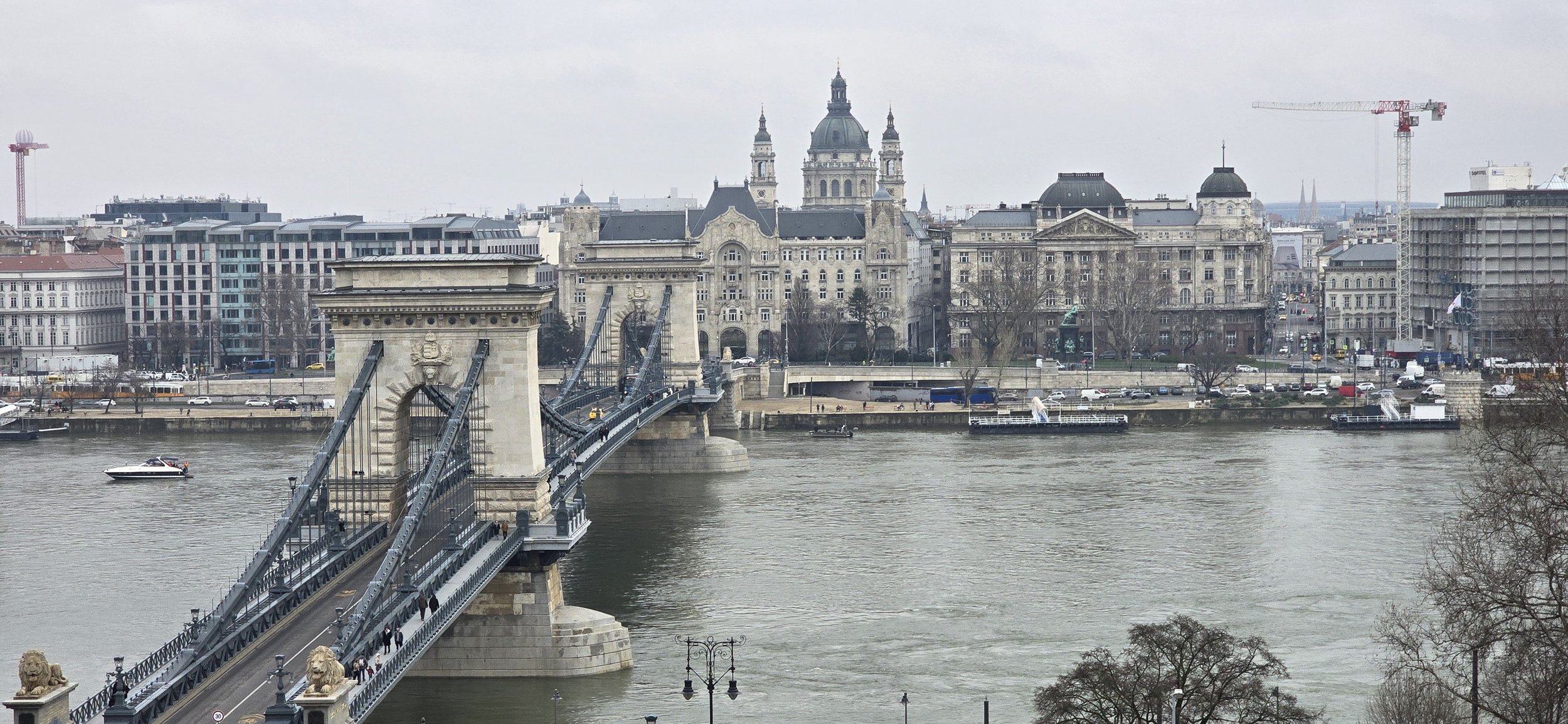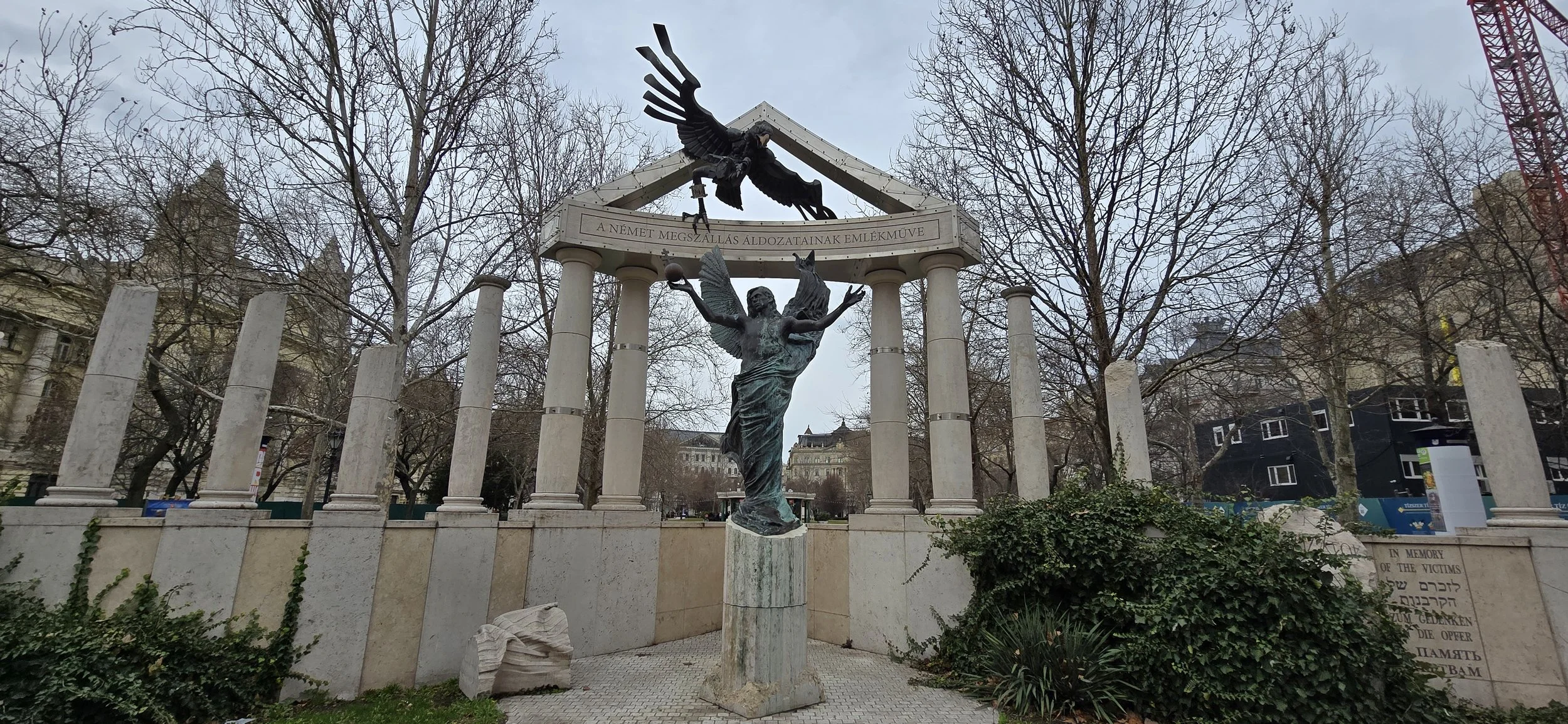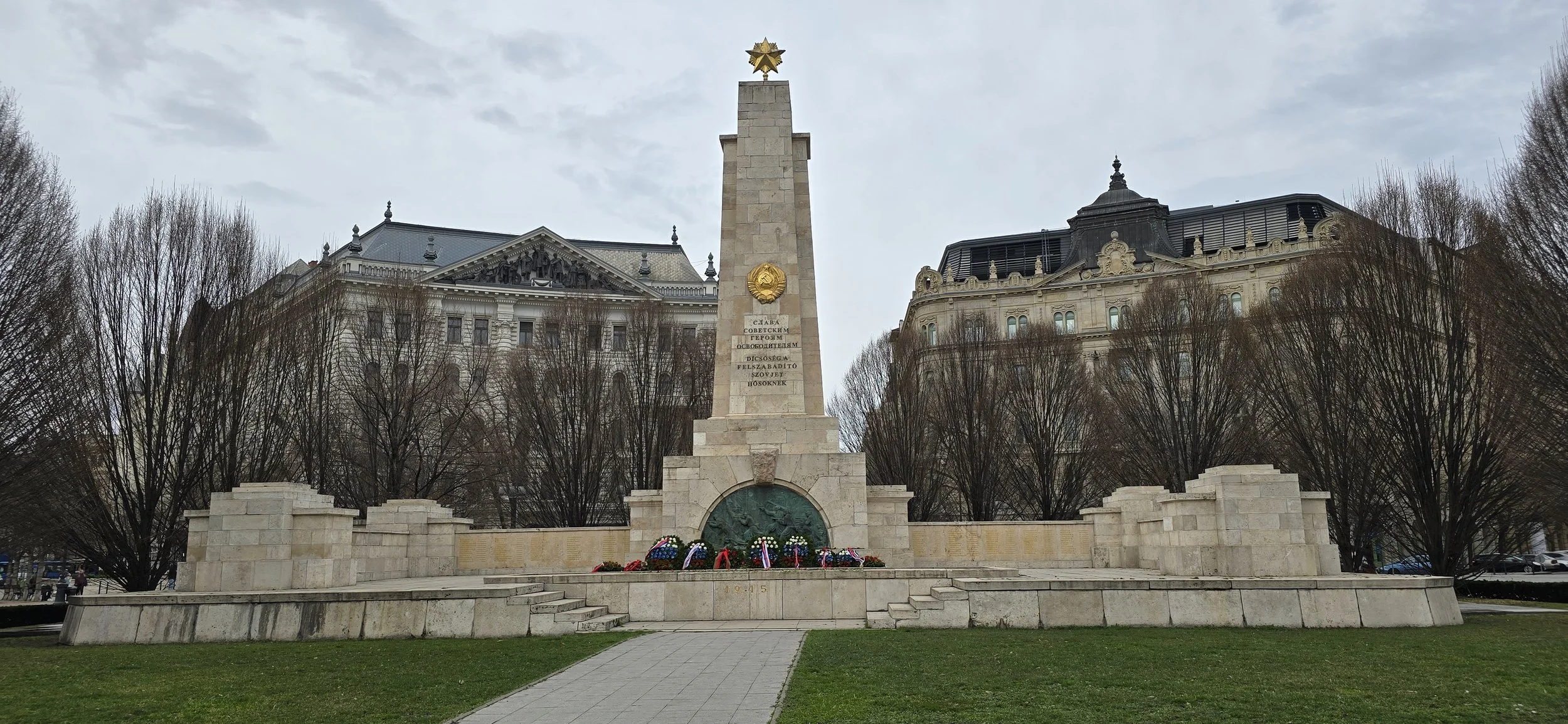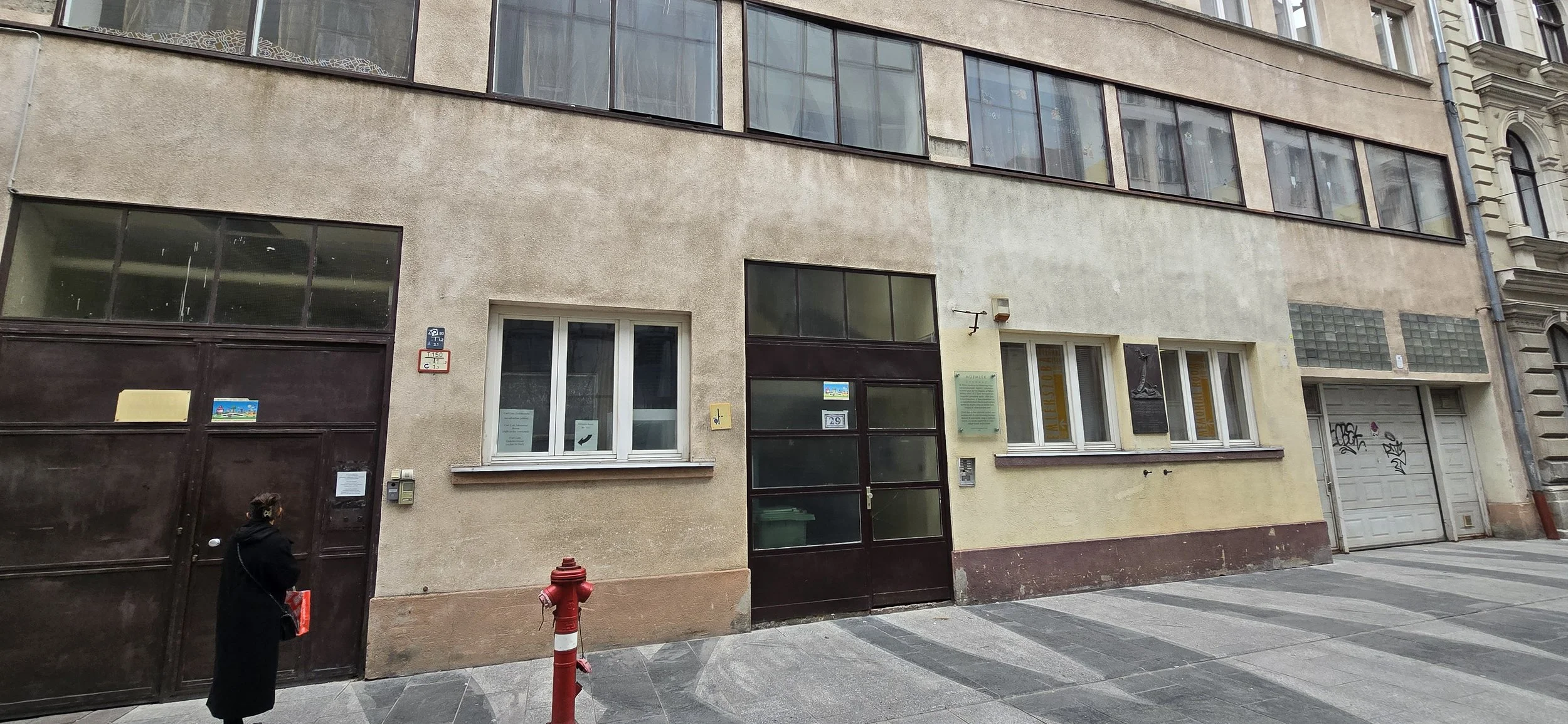
Budapest
Budapest Ghetto Memorial - This wall serves as a memorial to the rich, vibrant Jewish life that once flourished on these streets. This wall, however also reminds us of what occurred on these very same streets int he darkest days of the Holocaust. From December 2, 1944 until January 18, 1945, this neighborhood was the location of the Budapest ghetto, where seventy thousand Jews were crowded into an area of 0.3 sq km (0.12 sq ml) into 4513 apartments, with an average of 14 people in each room. As you stand before this wall, pause for a moment and recite a prayer for these 10000 victims, as well as all the 600000 Hungarian Jews who perished during the Holocaust.
Raoul Wallenberg last known sighting and Memorial - BRONZE replicas of his briefcase, stamped “RW”, are scattered across the world. One stands on Lidingö island near Stockholm, on the grassed-over foundations of the summer house where he was born. Others wait at the Holocaust memorial outside Nottingham, and by the United Nations in New York. In Budapest one has been left on a bench, as if at any moment Raoul Wallenberg, with his long coat, receding hairline and dark, burning eyes, will hurry past and retrieve it. With the blue-and-yellow “protection passes” he carried in that briefcase, a diplomat’s bluff made “authentic” with Swedish government stamps and decorative Swedish crowns, he saved the lives of thousands of Jews in Nazi-occupied Hungary in a mere five-month tour in 1944. In the 31 safe houses he set up round Budapest, decked with huge Swedish flags, he fed, clothed and cared for thousands more. As a result he was made a citizen of Canada, Israel, Australia and the United States; awards and institutes were set up in his honour, and streets and parks named after him. Yet the many memorials to him lack one thing, a date of death. In 1945, aged 32, he disappeared; and ever after the world refused to let him go.
Memorial to the victims of the Nazi occupation - Public monuments and memorials to commemorate the Holocaust are one of the strongest ways for a nation to educate the public, keep the memory of the victims alive and ensure the lessons of the Holocaust are learnt for future generations. Generally, it is Governments who are responsible for how a memorial will be created, managed and what purpose they will play within society in the future. A well-known example is the Archangel monument in Budapest, Hungary which is officially titled the ‘Memorial for Victims of the German Occupation’. The memorial depicts Hungary as the Archangel Gabriel being attacked by an eagle meant to symbolise Germany. The inscription simply reads “In memory of the victims”. This fails to recognise that almost all Hungarian citizens murdered during the Holocaust were Jews. The monument also suggests that all Hungarians were innocent victims of the Nazi Occupation and fails to recognise that Hungarian citizens were complicit in the process of rounding up Jews and putting them into ghettos and onto trains to be transported to camps.
Soviet liberation memorial - Freedom Square (Szabadság tér) is located in the Hungarian capital, Budapest, close to the Parliament. This space is also special because it is home to the Soviet Monument, which is very divisive in society. Some people think that the monument is a symbol of Soviet oppression, while others recall the liberation of Budapest from the German army at the sight of the monument.
The Glass House - Carl Lutz, the Swiss Vice-Consul in Budapest used this opportunity to set up a safe-house in this building. Following the takeover of power by the Hungarian Arrow Cross Party in mid-October 1944, the Glass House became a centre for accommodating up to 3,000 Jews and at the same time functioned as the headquarters for the Zionist Youth Movement, who used the building to coordinate relief and rescue activities, while also producing and distributing fake documents to enable illegal people-smuggling operations over the Hungarian borders. In many cases youngsters of 13 years of age were assigned as couriers, delivering life-saving documents to the members of the Forced Labor platoons and others hiding in and outside of Budapest. Life in the Glass House was extremely difficult, with over-crowding and people having to live for several weeks or months under cold and miserable conditions, sleeping in cellars or in corners. There was a constant lack of food and basic supplies. The neutral status of the Glass House was not always respected. On New Year’s Eve 1944, armed Arrow Cross militia decided to raid the building, resulting in numerous casualties. The Glass House, along with 2,000 occupants, was finally liberated in mid-January 1945.
Carl Lutz suitcase - Budapest, Hungary… March 1944 – When the Germans invaded Hungary in March 1944, the persecution of Jews in Hungary began. Appalled by these actions, Carl Lutz, a Swiss diplomat stationed in Budapest, began to do everything he could to help save Jews. Lutz began by appealing to the Hungarian government to stop the deportation of Jews. When that approach failed, he began to issue thousands of Schutzbriefe (protective letters) to Jews, which brought them under Swiss protection. He rented 76 buildings in Budapest in which to house the Jews under his protection. With the help of his wife, Gertrude, Lutz also provided them with food and help in getting medical treatment. During the death marches, November 10-22, 1944, Lutz and Gertrude followed the Jews, pulling many out of the march, by producing documents declaring them under Swiss protection. Though almost all diplomatic and consular missions had left Budapest by December 1944 (except the Swedish), Lutz remained in Budapest and continued his rescue efforts until the city was liberated on February 13, 1945. Carl Lutz passed away in 1975.
Arthur Wiess - repaired memorial stone. Owner of the Glass House
Tree of life - TUCKED AWAY IN THE REAR courtyard of the Dohany Street Synagogue is a memorial that is known by many names including The Tree of Life, The Holocaust Memorial Tree, The Emanuel Tree, and The Memorial of the Hungarian Jewish Martyrs. The sculpture was created by Imre Varga in 1991. The sculpture commemorates the at least 400,000 Hungarian Jews murdered by the Nazis and their Hungarian collaborators during World War II. The sculpture takes the form of a silver-colored metal weeping willow tree symbolic of mourning. The tree has thousands of small metallic leaves, some of which are engraved with the names of victims of the Holocaust that were once housed in the Budapest Ghetto. Some suggest that the weeping willow tree form also represents an upturned menorah. In front of the tree stands a tall, black pillar with two spaces that form the image of the Tablets of the Covenant. It’s believed the The pebbles placed around the base of the sculpture are left in memory of those who lost their lives.
Chain Bridge - Destroyed by the Nazis, it would take the Russians a month to cross the Danube. "Finally at 7:00 a.m., just 25 minutes before sunrise, the Bridge was blown up. There were still evacuees left on the structure when it sank into the icy waters of the Danube. Only the pillars remained intact. Beginning with the November 4th accidental detonation that irreparably damaged the Margit Bridge, it had taken the Germans just seventy-three days to render all the Budapest bridges across the Danube unusable. It would not be until 1963 that the bridges were fully repaired and carrying traffic again"
House of Terror Museum - former Gestapo and Arrow cross HQ -The House of Terror Museum is a building which commemorates two tragic eras in Hungarian history. From 1944 to 1990, our nation was robbed of its independence and freedom - first by Arrow Cross thugs supported by German Nazis, and then by communists backed by the Soviet Union. We have since recovered both our independence and freedom, to become free citizens of an independent Hungary.
Shoes on the Danube - Commemorates the thousands that were killed by the Arrow cross party.
Shoes on the Danube.
Carl Lutz Memorial - Carl Lutz (30 March 1895 – 12 February 1975) was a Swiss diplomat. He served as the Swiss Vice-Consul in Budapest, Hungary, from 1942 until the end of World War II. He is credited with saving over 62,000 Jews during the Second World War in a very large rescue operation.












